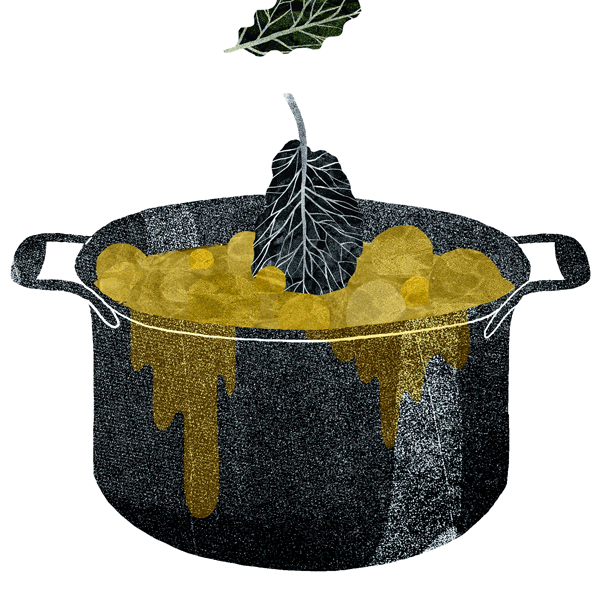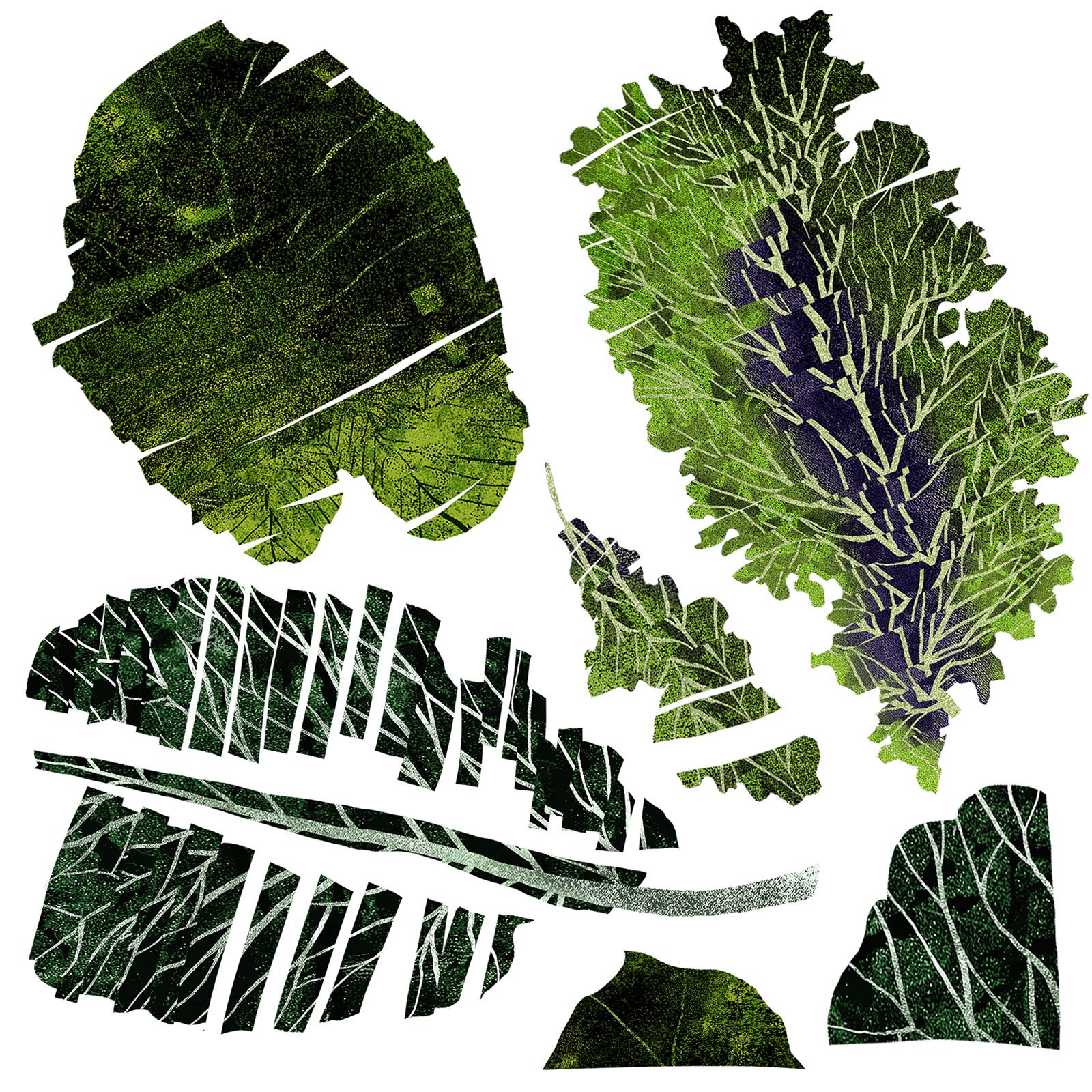
Collard greens may have traveled to North America with European settlers, but the technique for cooking them comes from somewhere else.
There was no question about what was going to happen whenever the massive stainless steel stockpot—worn, scratched, and dulled due to love and overuse—sat atop the stove in the kitchen of my childhood home in Atlanta. Beneath it an iridescent flame, sometimes blue and other times a fierce orange, billowed beneath where the pot was perched.
Greens. It was a pot of greens. It was always a pot of greens, whether collard, turnip, or mustard, or a union of all three, marinating and melding with smoked turkey or ham hocks. It was the beginning of something greater than its parts, to be cooked slowly in that big stockpot for hours.
The memory of this pot of greens came back to me earlier this year as I spent time in London with my Nigerian side of the family. Late one evening, weeks into my stay, my uncle came bursting into his home, returning from a several-weeks-long trip to Nigeria. He was armed with two suitcases and several smaller bags. He began to unload: Nigerian honey, plastic jars filled to the brim with nutty suya spice, a green plastic bag of chin chin, and several plastic bags filled with greens. Lots of greens.
At first the leaves, already cut into thin ribbons and stored loosely in the plastic bags, looked to be spinach. But why would my uncle dutifully lug 10 pounds of spinach all the way from Lagos back to London, when you can get it at Waitrose, Sainsbury’s, or M&M?
“Water leaf, pumpkin leaf,” my aunt corrected.

Seeing the cut greens triggered both a recognition—it reminded me of my mother breaking down huge bunches of greens and stuffing them in gallon-size ziplock bags to be cooked later—and a hunger to understand a link I’d never considered before. When my aunt cooked pumpkin leaf, it looked and smelled faintly of the collards I knew so well. I started to discern a deeper connection to the greens of my childhood growing up in the Deep South and the greens Nigerians have always known, loved, and cooked with.
Collard greens—bubbling in their broth until the golden pot likker emerges—are a beloved dish for Southerners. It’s a legacy food that grandmas, aunties, mothers, and cousins have made for generations, standing over a pot and dropping in turkey legs, ham hocks, and hot sauce to turn a pile of tough, fibrous leaves into something silky and sensational.
Michael Twitty, culinary historian and author of The Cooking Gene, suggests that this Southern version of the dish had its genesis on the other side of the Atlantic Ocean. “If you go to West African markets, one of the most astonishing things is the variety of greens,” he says. “Most of them become part of the sauce eaten with fufu or rice, finely chopped or cut into thin strips or even pureed or pounded into a juicy mass. But they are there and constitute a feature of the diet that has been of note for centuries.”
A part of the Brassica oleracea family of leafy greens, collard greens have origins dating back to more than 2,000 years ago. They were first grown in the eastern Mediterranean and Asia, and Greeks and Romans grew and ate them. When the Dutch and Portuguese came to what is now known as the United States in the 17th century, they brought the greens we know as collards with them. An enslaved community in Hanover Country, Virginia, was the first to call them “collerds,” according to Twitty.
“If you go to West African markets, one of the most astonishing things is the variety of greens.”
The enslaved communities were replicating a tradition borne across the Atlantic Ocean that centered around the pumpkin leaf (more commonly referred to as ugu or ugwu by West Africans). Its leaves grow on a vine of a gourd native to southern Nigerian soil, its scientific name Telfairia occidentalis.
In the Igbo cooking of southeastern Nigeria, these earthy-tasting leaves have a central role in egusi stew, a dish where the leaves are rinsed with salt water and chopped finely with ground melon seeds to make a stew. The finished product is then eaten alongside either pounded yam or fufu. Another dish that employs the leaf is edikang ikong, native to the Calibar region of Nigeria. The end result, like that of egusi stew, looks comparable to a bowl of collards—but without all the liquid swimming in the bowl. These green dishes are moist (but not quite soupy) and rely on stockfish, dried crayfish, or tripe for added flavor. Whether egusi or edikang ikong, the greens are sliced thinly, then cooked until they’re soft and silky.
Enslaved Africans and the generations that followed them in the United States cooked collard (or turnip and mustard) greens, as an adaptation of what they had been used to back home. The tradition continued with new materials, new plants, new lands, new greens.
Fred Opie, a professor of history and foodways at Babson College, has another way of putting this. “This is really the story of adaptation,” he says. “It’s what people do anywhere. And I think that’s what African-Americans have done—African-Americans looking to plant things for their subsistence gardens found this wonderful thing that looked as close as they could find to the bush greens back home.”
Recently, in Atlanta, I watched my mother gather huge bunches of collard greens and turnip greens at our local farmers market. I watched this simple dish marinating, melding, and becoming something greater after cooking slowly in that big stockpot for hours. I saw the process in a new light, knowing that this dish, made of chopped greens, a bit of meat and broth, represented a greater African diaspora connection spanning centuries, distant lands, and oceans.